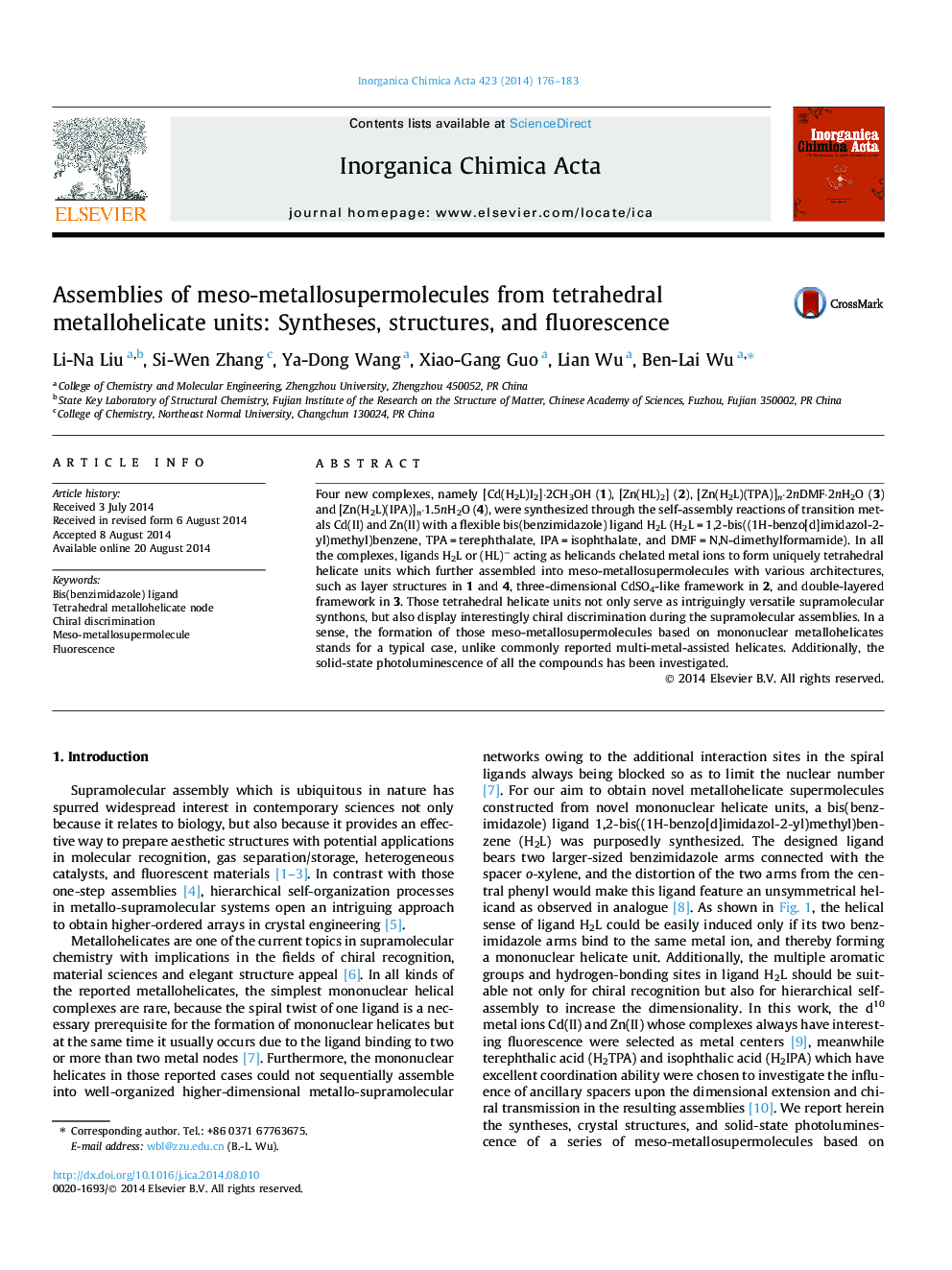| Article ID | Journal | Published Year | Pages | File Type |
|---|---|---|---|---|
| 1309455 | Inorganica Chimica Acta | 2014 | 8 Pages |
•A series of meso-metallosupermolecules based on tetrahedral helicate units is synthesized.•The bis(benzimidazole) ligands acting as helicands predetermine those uniquely tetrahedral helicate units.•The rarely observed nine-membered chelating rings are found in those complexes.
Four new complexes, namely [Cd(H2L)I2]·2CH3OH (1), [Zn(HL)2] (2), [Zn(H2L)(TPA)]n·2nDMF·2nH2O (3) and [Zn(H2L)(IPA)]n·1.5nH2O (4), were synthesized through the self-assembly reactions of transition metals Cd(II) and Zn(II) with a flexible bis(benzimidazole) ligand H2L (H2L = 1,2-bis((1H-benzo[d]imidazol-2-yl)methyl)benzene, TPA = terephthalate, IPA = isophthalate, and DMF = N,N-dimethylformamide). In all the complexes, ligands H2L or (HL)− acting as helicands chelated metal ions to form uniquely tetrahedral helicate units which further assembled into meso-metallosupermolecules with various architectures, such as layer structures in 1 and 4, three-dimensional CdSO4-like framework in 2, and double-layered framework in 3. Those tetrahedral helicate units not only serve as intriguingly versatile supramolecular synthons, but also display interestingly chiral discrimination during the supramolecular assemblies. In a sense, the formation of those meso-metallosupermolecules based on mononuclear metallohelicates stands for a typical case, unlike commonly reported multi-metal-assisted helicates. Additionally, the solid-state photoluminescence of all the compounds has been investigated.
Graphical abstractA series of meso-metallosupermolecules has been constructed from novel tetrahedral helicate units predetermined by helical twist of the synthesized bis(benzimidazole) ligand 1,2-bis((1H-benzo[d]imidazol-2-yl)methyl)benzene.Figure optionsDownload full-size imageDownload as PowerPoint slide
